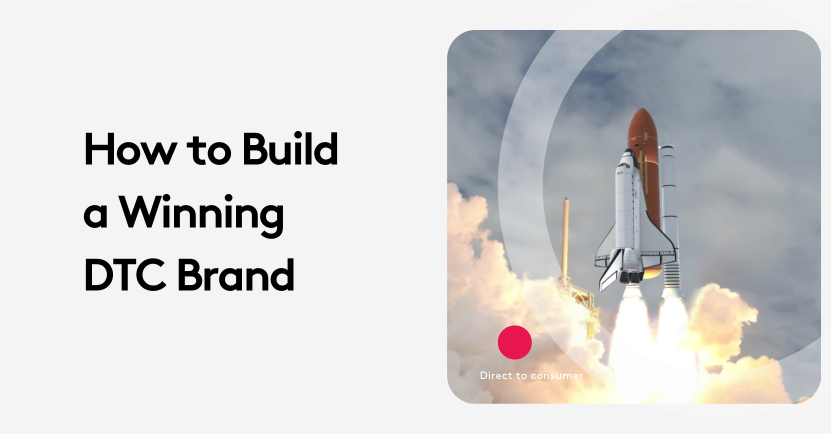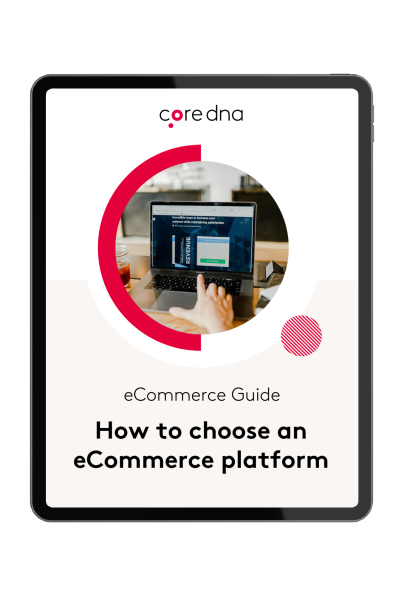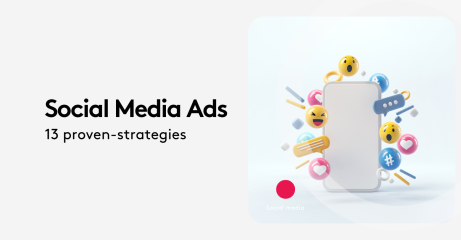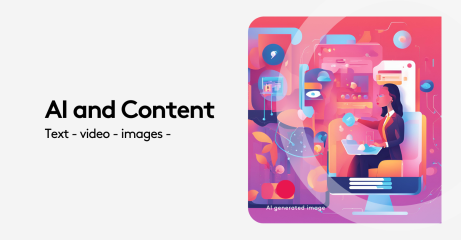Are You Behind on D2C Trends? What to Know Now

The D2C landscape is evolving faster than many realize. If your brand isn’t tracking the latest shifts, you might already be falling behind your competitors.
In the past years, several direct to consumer brands have hit the market and consumers responded positively. From dollar shave club to olive oil, D2C brands are everywhere and they keep growing.
To understand the success of direct to consumer brands, consider this number: from 2019 to 2023, DTC brands grew from 320 to 110,000.
Analysts expect these brands and companies to make a total revenue of $111.5 billion in 2025.
So if you are thinking of going D2C and launch your brand to go direct to consumer, read on.
In this article we will dive into how to launch a successful direct to consumer brands
Key takeaways
- Higher Margins & Control: Direct to consumer cuts out middlemen for better profits and full control of the customer experience.
- Stronger Customer Relationships: Direct access enables personalization and builds loyalty.
- Smart Tech is Key: A strong platform streamlines ops, data, and marketing.
- Marketing Matters: Bold branding and social media drive visibility.
- Success Stories: Brands like Feastables and Blueland show how DTC can go viral.
On this page:
Understanding Direct to Consumer
Direct to Consumer (D2C) is a business model where brands sell their products or services directly to customers, bypassing traditional retail channels.
This model has really taken off in recent years, especially with the rise of eCommerce and online selling.
Direct to consumer companies own the entire sales process. They have greater control over product pricing, customer experience, and how they position their brand.
Most D2C brands have a stronger connections with their customers, gather valuable data, and enjoy higher margins
With more data about their customers, brands can personalize experiences and tailor marketing and offerings to the audience.
Direct access to customers allow brands to move faster, innovate based on customers' feedback, and offer unique value propositions.
Plus, it allows for more flexibility in creating exclusive or limited-edition products that wouldn’t necessarily fit into a retail distribution model.
Direct to consumer business model is a great way to streamline your operations and create a direct and lasting connection with your customers.
Benefits of Direct to Consumer
The direct-to-consumer movement key benefits include enhanced performance, a boost in profitability, and stronger customer loyalty. Let’s look at some further benefits of using direct to consumer marketing.
Build Stronger Customer Relationships
Adopting the DTC model allows a business to focus on direct customer relationships and control the customer journey.
When a brand had a direct connection to its customers, it builds trust and loyalty, which are all key to long-term business relationships.
A direct to consumer strategy helps a business personalize shopping experiences. It meets specific customer needs and generates tailored recommendations. By having first party data, brands can anticipate needs, suggest new products and increase lifetime value.
Any business owner knows too well that when a customer feels valued, they are likely to return, make repeat purchases and advocate for your brand, becoming a brand ambassador.
Boosted Profit Margins
Profit margins start to head north as businesses do not need to pay off other retailers and wholesalers. With a more significant profit margin, companies find themselves in a position where they can invest in development, marketing campaigns, scaling and more.
The benefits of the direct to consumer model for small business operators, brands and startups are enormous as they reap the rewards of higher profit margins.
Businesses have more flexibility to offer more competitive prices while still recouping a more significant share of profits.
Customer Data at Your Fingertips
Data should be the driving force of a business's strategy and decisions. D2C strategy gives brands direct insight into their customers’ purchasing patterns, preferences, recommendations and feedback.
They use these insights to steer product development and manage inventory and marketing campaigns.
From websites interactions to social media, brands understand their audience at a deeper level allowing them to predict behavior, pain points, preferences and future purchasing trends.
Challenges of the Direct to consumer Business model
Doing direct to consumer is not a walk in the park. There several things to consider from logistical complexities to customer acquisition costs. But there is nothing good planning can't solve. So let's take a look at the challenges brands may face when embracing the direct to consumer business model.
Inventory and Fulfillment Complexities
One of the main challenges of opting for the direct to consumer business model is logistics. DTC companies must set up supply chains that manage warehouse, storage, packaging, and shipping. Additionally, a direct to consumer ecommerce brands manages customer returns, which has additional challenges.
Partnering with a third-party logistics (3PL) providers or create a fulfillment center(s) is the way to go. Due to a lack of physical space, many DTC brands must meticulously manage their inventory to avoid lack of or overstocking.
Solution: To avoid logistic issues, we recommend that a direct to consumer brand invests in a robust eCommerce platform with integrated inventory management system. The eCommerce DTC platform should also offer integrations with 3PL to streamline shipping and returns.
Brand Awareness
Most DTC brands are starting from scratch and trying to acquire new markets. To conquer this challenge, businesses must dig deep to create effective marketing strategies that reach and engage with their target audience(s).
Naturally, building a brand name and the trust of customers takes time, especially if the market you are in is already competitive and buzzing with other brands.
Solution: Marketing strategies must seriously impress and stand out from the crowd. Creative storytelling, answering pain points and describing the product’s benefits are all key to successful campaigns.
Influencer campaigns, UGC (user-generated content), viral social media posts, GIFs and stories are crucial, too. Extended exclusive offers, events and limited editions create the FOMO factor and a sense of urgency to ‘buy now’.
Clever use of SEO content and quality content that is useful and shareable are great ways to boost organic engagement and long-term brand recognition.
High Customer Acquisition Cost
Direct to consumer marketing is the heart of a successful brand. It not suprising that DTC allocate 20 to 30% of their revenue to marketing and most of it is spent on consumer acquisition channels.
These channels include paid social campaigns, search ads, influencer strategy, SEO sourcing, and implementation. These marketing efforts are costly which impacts the cost per acquisition (CPA).
Online advertising is extremely competitive and highly specialized, so brands must work hard and cleverly to stand out, even more so when they first take off.
Solution: Data is your friend. Use data to ensure any marketing strategy is highly targeted. Use AI tools and analytics to identify those high-value customers and segments and follow this with finely tuned marketing messages.
Key Components of a Direct to Consumer Strategy
There are several key components to a successful direct to consumer strategy.
These include focusing on a strong brand identity, highly targeted digital marketing campaigns, building a strong brand identity, leveraging effective digital marketing, creating a smooth user experience, and developing a strategy based on data and analysis.
Brand Identity
Brands need a consistent benefit-driven, pain-point-busting brand story so that their customers can relate and engage with the product, fostering loyalty and trust.
Like your identity, your brand must be unique and stand out from the others in the same niche. Even better, without saying too much, your brand must reflect your business’s values, mission, and USP.
RAINS, is a brand created a powerful brand for a very niche market. Waterproof outerwear has never been this edgy, sensational and unique. With a brand identity this strong, RAINS was able to standout in a crowded market and redefine what functional wear is.
Social Media Community
If you did not hear about Graza this past year, then you probably lived under in a cave. Graza the olive oil brand is on every food influencer instagram in the US.
From clever packaging to sensational social media strategy and partnerships, Graza made Olive oil a status symbol. No more Rolexes here, it's all about that bruschetta.
Graza’s social media strategy excelled by fostering community engagement through influencer partnerships, interactive content, and authentic customer testimonials.
Their focus on storytelling, visual appeal, and building social proof has effectively established a strong, relatable brand presence.

Exemplary User Experience
A seamless user experience takes the pain from purchasing, leading to higher conversion rates and customer satisfaction.
A user-friendly, mobile-friendly website with responsive customer service systems is key. Customers don’t have much patience for poorly designed platforms that are difficult to navigate, slow to load or don’t fit small screens.
A great channel to build trust with consumers is your support options. From phone and email to live chat, your customers need to feel they will receive great service should they need it.
Decision-Making Driven by Data
Utilizing analytics to inform your strategies is essential for optimizing product offerings, pricing, and marketing efforts. Collect and analyze data on customer behavior, sales trends, and marketing campaign performance to make informed decisions.
This approach allows you to identify opportunities for improvement, tailor your offerings to meet customer needs and allocate resources effectively.
For instance, analyzing customer feedback and purchasing patterns can help you adjust your product line to better align with market demands, leading to increased sales and customer loyalty.
Direct to consumer brands will be successful if they focus on these key areas:
- First, they should create a strong brand identity.
- Next, they need to use effective digital marketing.
- It's also important to ensure a smooth user experience.
- Finally, making decisions based on data is crucial.
5 Brands leading Direct to Consumer Trends
Let's take a look at the top direct to consumer brands that are reshaping how we consume.

1. Saatva: Revolutionizing the Mattress Industry
A new player in the sleep industry. Saatva is a DTC company that offers luxury mattresses directly to consumers. No high mark-ups and no bricks and mortar stores.
Saatva’s focus is firmly on white glove customer service, offering both delivery and mattress removal services and 365days return. The business ticked all the boxes regarding consumers’ demands for eco-friendly, organic, natural memory foam. In just a few years, it moved from manufacturer to a $400 million-plus DTC company.
Saatva DTC Strategy:
Trust was built through word of mouth and positive reviews. It capitalized on its luxury service to standout from online competitors. Targeted digital ads and SEO strategies played a big role in building brand awareness.
An influencer campaign using established bloggers and sleep experts also helped with campaign reach. Saavta’s commitment to sustainability and customer is-king ethos meant it became a leader in the mattress world. (Saatva's marketing channels: SEO, influencer marketing, and customer reviews)

2. Feastables: Melting the Mold in The Chocolate World
Are you a MrBeast super fan? He and the Feastables became a viral sensation. Not only was MrBeast a delicious offering, but the messaging around the better-for-you chocolate bar hit the right note with the market, gaining a significant share. Feastables appeal to the health-conscious consumer who just happens to appreciate tasty chocolate.
Feastables Viral Strategy
With a social media following to melt for, MrBeast played a chunky role in Feastables' sudden success. Feastables were all over YouTube, Instagram, and TikTok, and they had viral-worthy content, including contests and challenges.
Feastables also used cross-promotional marketing to create a buzz with charity events and stunts. This professionally implemented strategy drove traffic to the Feastables website and social platforms and used a network of influencers.

3. Blueland: Dazzling Campaign for Cleaning Products
Blueland has cleaned out the cleaning industry with its range of eco-conscious products. It’s goodbye to traditional single-use plastics as Blueland uses tablets and the customer creates the liquid by adding water.
Blueland offers a subscription model to get refills directly to your home.
Blueland Viral Strategy:
Blueland’s branding and mission focus on being environmentally friendly with its range of sustainable products.
Blueland focussed on a social media strategy using visually-driven Instagram and Pinterest. Environmental campaigners and a team of influencers helped to promote Blueland’s products and generate a vibe.
The clever use of paid digital advertising, SEO and email marketing drove sales. (Blueland's marketing channels: Social media (Instagram, Pinterest), influencer marketing, digital ads)

4. Mini Katana: Pop Culture Phenomenon
Harnessing Japanese culture and anime popularity, Mini Katana specializes in high-quality katana swords. The brand’s offering included showcasing the craft to a passionate fanbase, most of which happen to hang in the pop culture community.
Mini Katana Viral Strategy:
TikTok and Instagram were used to appeal to their target audience with viral videos of the swords in action.
The brand engaged with anime and pop culture influencers. The shareability factor was ramped up so that Mini Katana was shared organically, creating significant traffic to its website. (Mini Katana's marketing channels: Social media (TikTok, Instagram), influencer marketing, viral content creation)

5. Who Gives a Crap: Wiping Out Competitors In The Toilet Paper Industry
Again branding is everything. Who thought toilet paper could be this cool? Just the name is enough to get your attention! Eco-friendly toilet paper manufacturer Who Gives a Crap cares about the environment and social projects.
Their campaign is focused on going directly to the consumer’s heart and their smallest room.
Who Gives a Crap Viral Strategy:
The name, its social media presence, and unforgettable branding make Who Gives a Crap stand out from the crowd. Using a good dollop of humor and heart appeal, the product speaks to eco and socially conscious shoppers. Campaigns ran on Instagram and TikTok, as well as influencers and environmental advocates. (Who Gives a Crap's marketing channels: Social media (Instagram, TikTok), influencer marketing, referral programs)
The above case studies show how brands have successfully leveraged social media, influencer marketing, and their USP to become virally successful.
How to build a successful DTC brand?
To build a successful brand, you first need to understand your market and target audience.
Know their pain points, desires, and what resonates with them—this insight is key to shaping your marketing strategy. Once you've identified your audience, use tools like AI for personalized experiences, data-driven decisions, and streamlined inventory management.
Pick a robust eCommerce platform that can grow with your business. Use AI to help create smooth customer experiences and make marketing your priority.
Choose a Powerful Direct to consumer Platforms
A robust eCommerce and content management platform is at the core of any successful dtc strategy.
When looking at direct to consumer software, look into platforms that offer powerful integrations, flexibility and hands on customer support.
For brands, seamlessly integrating an eCommerce platform with content management tools is crucial in enabling operational efficiency and a compelling customer experience.
These platforms are not just about selling products—they are the backbone of a brand’s online presence, influencing everything from the user experience to inventory management and marketing strategies.
Streamlining Operations
For brands, operational efficiency is key to maintaining profitability. Your direct to consumer platform should support inventory management, order processing, and fulfillment.
Features like real-time inventory tracking, automated restocking alerts, and integration with third-party logistic providers ensure that brands can efficiently manage their supply chains.
Furthermore, a strong content management system (CMS) helps businesses manage their product listings, digital assets, and customer-facing content in one centralized location.
It enables easy updates, essential for maintaining consistent branding and keeping product information current without requiring technical expertise.
A CMS supports fast scaling by allowing brands to adjust their offerings, product descriptions, and promotional content across various channels.
Create an OMG Viral Moment
- Use Social Media You’ve got to be in it to win it, and that’s most definitely the case with social media. The various social platforms are conduits for virality. For viral content, you want to create unique and captivating content relatable to your audience. As well as posting, you need a presence to answer comments, converse, and share UGC. Use social platforms like TikTok, Instagram, and YouTube to humanize your brand. Share the magic of behind-the-scenes moments, give sneak peeks, announce the exciting news, launches, countdowns and share your values, mission and purpose
Tip: Influencer campaigns are worth their weight in gold. Choose the right influencers whose followers are likely to engage with your brand. Any influencer campaign must feel organic and ‘real’ and not contain ad-speak.
- Shareable Content, Challenges and Cute Moments When you think about viral campaigns, they’re never that technical or expensive. The key is creating shareable content. Whereas traditional advertising has its place, shareable content involves giveaways, competitions, and challenges, sometimes involving groups. A great example is a brand like Feastables, which created challenges and contests that linked back to MrBeast’s massive following.
- Customer Retention through AI and Automation Build on upward traction and loyalty by utilizing AI and automation tools. Create content and offers suited to your audience and launch them into your audience's eyeballs through email marketing, retargeting ads, and chatbots. As mentioned, AI data analytics can be used to look at everything from lifetime value to retention.
Long-Term Sustainable Business
- Sustainable, Ethical and Value-Driven: In a saturated market, a business that doesn’t appear to care will not get a look in. Focusing on sustainability is no longer a ‘nice to have’. Consumers want to shop with brands that reflect their values.
Your materials, production processes, and business practices should be environmentally conscious. Beyond this, stay accountable by highlighting your commitment and how you’re achieving it (e.g. eco-friendly packaging, ethical sourcing, replanting, carbon offset). Showing your commitment counts.
Tip: Look at Blueland, which has thrived by focusing on sustainability. Marketing campaigns need to show off your environmental credentials.
- Omnichannel Strategies Don’t put all your eggs in one place; think big by exploring omnichannel strategies. Use digital channels (eCommerce, mobile apps, social media) and spare a thought for physical retail, pop-up shops and third-party collabs. A hybrid approach allows you to build brand awareness and seamlessly cater to customers across platforms.
- Technological Scalability: Support your growing business by investing in technology that scales with you. Opt for platforms that offer flexible integrations and future expansion. While it might seem a long way off, when you want to expand to new markets, introduce new products, or optimize logistics, you want to ensure that the technology you brought along for the ride can handle it! Choosing a robust CRM system from the outset with automation tools and data analytics platforms is innovative and strategic.
Finally, Innovate and Adapt
The core of the model is direct relationships. As consumer preferences evolve, so must your brand. Innovation, whether through technology, unique product offerings, or marketing tactics, is necessary.
While it can seem scary, never avoid pivoting or adopting new tools (think AI-driven insights or customer-centric eCommerce solutions). These are just the tools that will keep you one step ahead.











